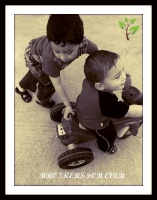raedgazo
مشارك مميز مع مرتبة الشرف


الاوسمة



عدد المساهمات : 1689
تاريخ التسجيل : 12/10/2010
 |  موضوع: Adjectives and Adjective Clauses موضوع: Adjectives and Adjective Clauses  الجمعة أبريل 29, 2011 7:21 am الجمعة أبريل 29, 2011 7:21 am | |
| Adjectives and
Adjective Clauses
- Adjective Order In English, it is common to use more than one adjective before a
noun -- for example, "He's a silly young fool," or "she's a smart, energetic
woman." When you use more than one adjective, you have to put them in the
right order, according to type. This page will explain the different types
of adjectives and the correct order for them. The basic types of adjectives
Opinion | An opinion
adjective explains what you think about something (other people may
not agree with you). Examples:
silly, beautiful, horrible, difficult
| | Size | A size
adjective, of course, tells you how big or small something is.
Examples:
large, tiny, enormous, little
| | Age | An age
adjective tells you how young or old something or someone is.
Examples:
ancient, new, young, old | | Shape | A shape
adjective describes the shape of something. Examples:
square, round, flat, rectangular
| | Colour | A colour
adjective, of course, describes the colour of something. Examples:
blue, pink, reddish, grey | | Origin | An origin
adjective describes where something comes from. Examples:
French, lunar, American, eastern, Greek
|
Material | A material
adjective describes what something is made from. Examples:
wooden, metal, cotton, paper
|
Purpose | A purpose
adjective describes what something is used for. These adjectives
often end with "-ing". Examples:
sleeping (as in "sleeping bag"), roasting (as in "roasting tin")
| Some examples of adjective order
|
Opinion |
Size |
Age |
Shape |
Colour |
Origin |
Material |
Purpose |
| | a | silly |
| young |
|
| English |
|
| man | | a |
| huge |
| round |
|
| metal |
| bowl | | a |
| small |
|
| red |
|
| sleeping | bag | Adjectives and Adjective Clauses
- Adjective ClausesHere is a brief review of adjective clauses and relative pronouns.
 | An
adjective
clause is used to
describe a noun: |  The The
car, which was red, belonged to Young-Hee.
|
|  | A
relative
pronoun is usually used to
introduce an adjective
clause: |  Young-Hee, Young-Hee,
who is a Korean student, lives in
Victoria. |
| The main relative pronouns are:
|  |
Who:
used for
humans
in subject
position:: |  Hans, Hans,
who is an architect, lives in Berlin.
|
|  |
Whom:
used for
humans
in object
position:: |  Marike, Marike,
whom Hans knows well, is an interior
decorator. |
|  |
Which:
used for
things and animals in
subject or object position:: |  Marike Marike
has a dog which follows her everywhere.
|
|  |
That:
used for
humans, animals and
things, in subject or object position (but see below):: |  Marike Marike
is decorating a house that Hans
designed. |
| There are two main kinds of adjective clause:
|  |
Non-defining
clauses: give
extra
information about the noun, but they are
not essential: |  The The
desk in the corner, which is covered in books,
is mine. |
(We don't need this information in order to understand the sentence.
"The desk in the corner is mine" is a good sentence on its own -- we
still know which desk is referred to. Note that non-defining clauses
are usually separated by commas, and that is not
usually used in this kind of context.) |
|  |
Defining
clauses: give
essential information about the noun: |  The The
package that arrived this morning is on
the desk. | (We need this information in order to
understand the sentence. Without the relative clause, we don't know
which package is being referred to. Note that
that is
often used in defining relative clauses, and they are not separated
by commas.) | | |
|
